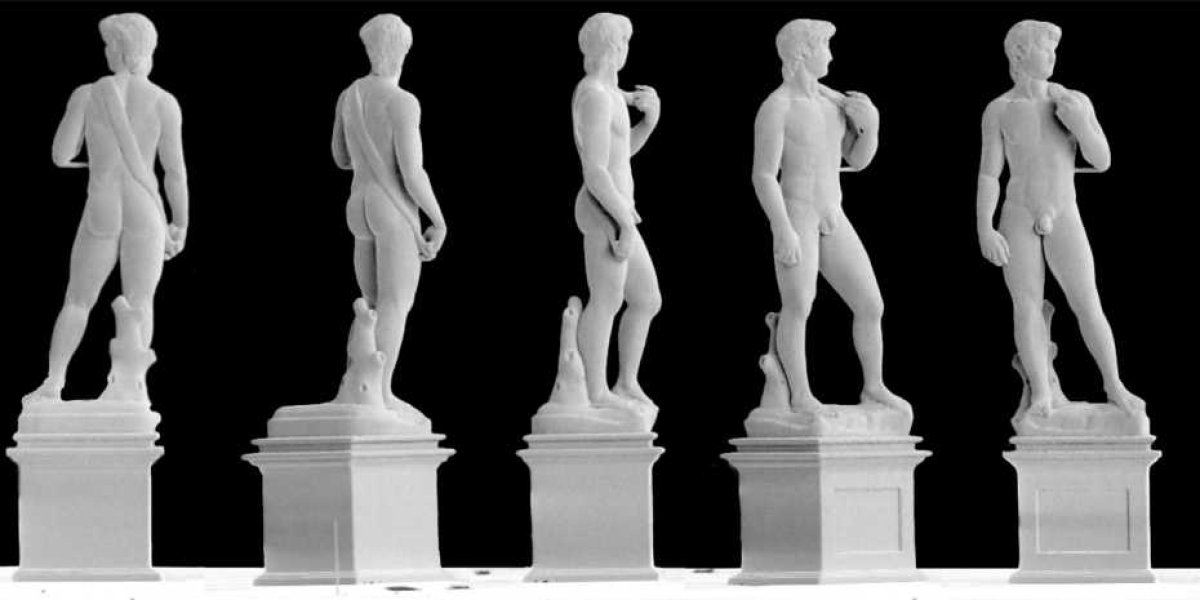Scientists have created two tiny replicas of Michelangelo's famous "David" statue using a special 3D printing technique.
While the real, marble masterpiece stands 17 feet tall, the detailed miniatures are made from copper and are much smaller. The taller one measures just one millimeter in height while the other is ten times smaller, according to a study published in the journal Micromachines.
A team from ETH Zürich university in Switzerland produced the tiny statue with a technique they developed a few years ago that can print metal structures at the nanometer and micrometer scale.
The technique allows the team to deposit dissolved metals onto a a substrate with a high degree of precision, building up minuscule structures, layer by layer.
Previously, the team had mostly used the technology to create tiny columns or coils. They decided to replicate the David statue to demonstrate the potential of the technology.
"The process allows us to print structures or geometries of all levels of complexity," Giorgio Ercolano, one of the authors of the study, said in a statement. "I could even have printed the room that the statue is standing in—the data includes that as well!"
The researchers printed the statues all in one go without using any supports or templates. The blueprints that the team used were freely available on the Internet.
The smaller statue is less detailed than the larger one but took much less time to create. In total, it took 20 minutes to print the small David and 30 hours to create the larger one.

In theory, the team's special 3D printer can print objects up to five millimeters in height. However, the technology is limited in practice by the fact that the printer cartridge contains only one microliter of the printing substance. This is just enough to print the larger David statue—although with this quantity you could create hundreds or thousands of smaller objects.
"We're thrilled that a technology from our research lab has made its way into practical application," Tomaso Zambelli from ETH's Laboratory of Biosensors and Bioelectronics said in the statement. "An independent group was able to adopt our 3D printing technology and even improve upon it—which shows that it really works."
The researchers say that their printing technique could have applications in the electronics industry. For example, it could be used to connect computer chips together or precisely repair microelectronic systems.
One of the most famous sculptures in the world, Michelangelo's David is considered a masterpiece of Italian Renaissance art. Michelangelo began working on the more-than-five-ton statue in 1501, completing it three years later.
Uncommon Knowledge
Newsweek is committed to challenging conventional wisdom and finding connections in the search for common ground.
Newsweek is committed to challenging conventional wisdom and finding connections in the search for common ground.
About the writer
Aristos is a Newsweek science reporter with the London, U.K., bureau. He reports on science and health topics, including; animal, ... Read more
To read how Newsweek uses AI as a newsroom tool, Click here.





